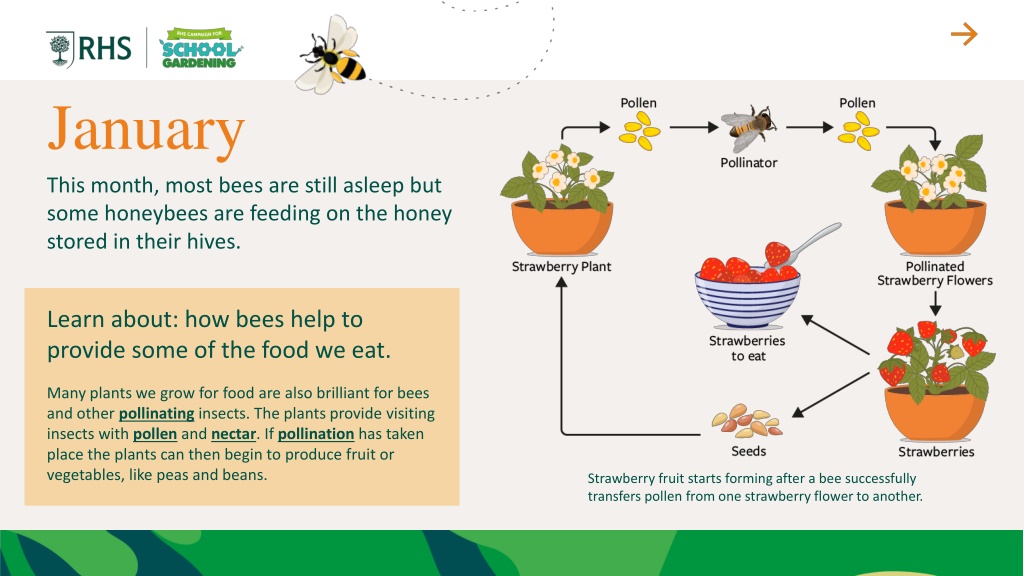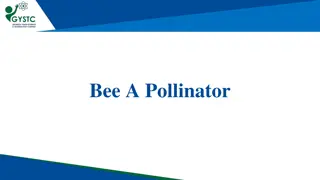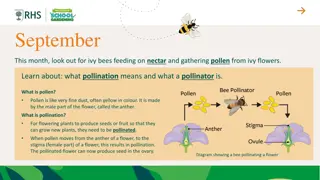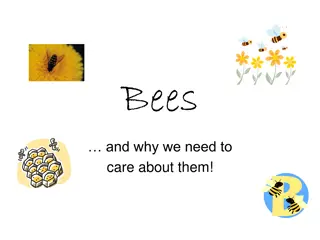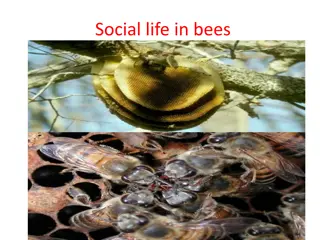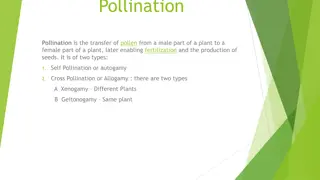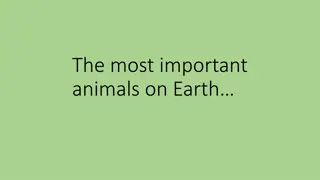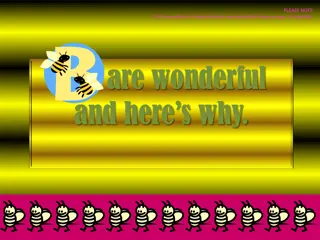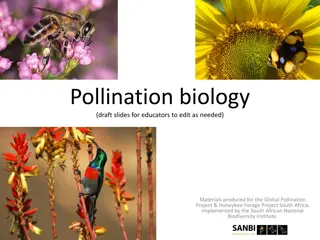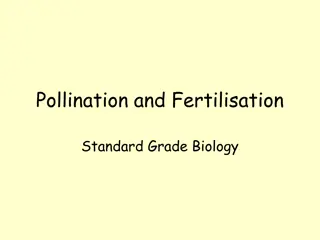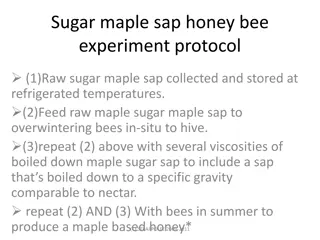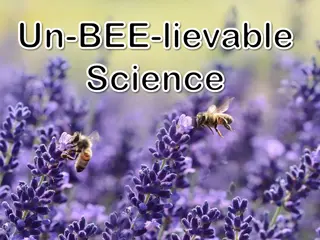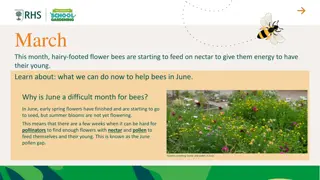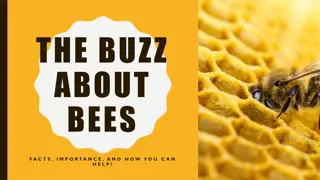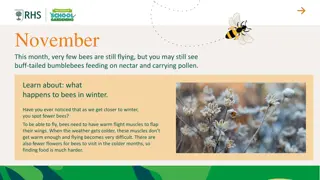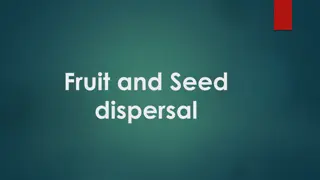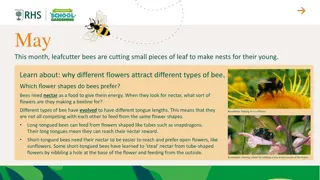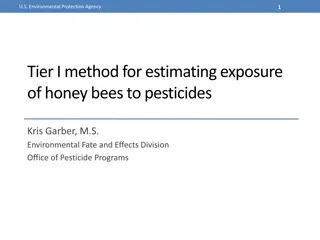The Vital Role of Bees in Pollination for Food Production
Bees play a crucial role in pollination, helping to produce a variety of foods like fruits, vegetables, and herbs that end up on our plates. This process involves bees transferring pollen between plants, leading to the development of crops such as strawberries and peas. Without bees and other pollinators, plant reproduction and food production would be greatly impacted.
Download Presentation

Please find below an Image/Link to download the presentation.
The content on the website is provided AS IS for your information and personal use only. It may not be sold, licensed, or shared on other websites without obtaining consent from the author. Download presentation by click this link. If you encounter any issues during the download, it is possible that the publisher has removed the file from their server.
E N D
Presentation Transcript
January This month, most bees are still asleep but some honeybees are feeding on the honey stored in their hives. Learn about: how bees help to provide some of the food we eat. Many plants we grow for food are also brilliant for bees and other pollinating insects. The plants provide visiting insects with pollen and nectar. If pollination has taken place the plants can then begin to produce fruit or vegetables, like peas and beans. Strawberry fruit starts forming after a bee successfully transfers pollen from one strawberry flower to another.
Bees and our food How pollination gives us food Fruit Vegetables Herbs Strawberry plant Pea plants Bumblebee on chive flowers Bees and other pollinators visit the flowers of fruit plants such as strawberries to feed on nectar and collect pollen from their flowers. Some of the pollen from the flower sticks to their bodies and is taken with them when they visit the next strawberry flower. This flower is now pollinated and will eventually develop into strawberry fruit. Bees and other pollinators visit the flowers of vegetable plants such as peas to gather pollen and feed on nectar. When they do this they pollinate the flowers which go on to produce the peas which we eat. Bees and other pollinators visit the flowers of herb plants that add flavour to our food. (For example chives, rosemary, sage and thyme.) Chives have purple flowers loved by bees. When bees visit the flowers they transfer pollen from one flower to another, pollinating them. Pollinated flowers eventually produce a seed which can grow into another chive plant.
Learning activity: think about how bees help to provide the food on our plates. 1. Think about the food that you eat. Which foods do bees help put on your plate? 2. Draw or cut out pictures to show the different foods that pollinators help to produce. Reflection questions: Are you surprised at how many foods pollinators have helped to provide? What do you think would happen if bees and other pollinators weren t able to pollinate plants?
Home | Pollination The process of when a flower or plant has received pollen which has resulted in the flower or plant being able to make seeds.
Home | Pollen Dust-like grains, produced by the male parts of flowers.
Home | Pollinated When a flower or plant has received pollen, which has resulted in the flower or plant being able to make seeds.
Home | Pollinators Animals that move pollen from one flower or plant to another e.g. bees.
Home | Pollinating Animals that move pollen from one flower or plant to another e.g. bees.
Home | Nectar Sweet liquid mainly produced in flowers.
